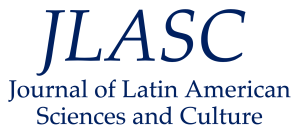这 领导在气候变化中的作用
Shabahat Hasnain Qamar 的意见文章
DOI:
https://doi.org/10.52428/27888991.v4i6.271关键词:
领导, 气候变化, 可持续能源, 污染摘要
日益严重的全球变暖问题可能导致环境变化,影响人类健康等等。今天,大多数国家都承认对抗全球变暖的重要性和紧迫性,但在如何最好地实现温室气体净零排放和分摊成本方面仍然存在显着差异。不幸的是,我们生活在这个两极分化的世界中,因此产生了很大的分歧空间——文化、地域甚至世代之间的冲突。这反过来又会导致信任的恶化,这不仅会减缓我们在应对气候变化方面的进展,还会蔓延到其他社会和政治问题。
这篇观点文章完全基于我个人对青年领导力如何影响可持续能源可用性的传播的看法,作为人类,作为社会的领导者,我们的角色要求我们对这种环境承担全部责任,因为这将是真正有益的为我们这代人。
随着每个人作为负责任的公民参与创造一个更美好的世界,我们将以更快的速度朝着我们的最终目标前进。结果将是一个简单、正义的循环。
Downloads
参考
Cash, D. W., & Moser, S. C. (2000). Linking global and local scales: Designing dynamic assessment and management processes. Global Environmental Change, 10(2), 109–120. https://doi.org/10.1016/S0959-3780(00)00017-0 DOI: https://doi.org/10.1016/S0959-3780(00)00017-0
Climate Change. (n.d.).
Conway, D., & Mustelin, J. (2014). Strategies for improving adaptation practice in developing countries. Nature Climate Change, 4(5), 339–342. https://doi.org/10.1038/NCLIMATE2199 DOI: https://doi.org/10.1038/nclimate2199
Dietz, T. (2013). Bringing values and deliberation to science communication. Proceedings of the National Academy of Sciences of the United States of America, 110 Suppl 3(Suppl 3), 14081–14087. https://doi.org/10.1073/PNAS.1212740110 DOI: https://doi.org/10.1073/pnas.1212740110
Dupuis, J., & Knoepfel, P. (2013). The Adaptation Policy Paradox: the Imple-mentation Deficit of Policies Framed as Climate Change Adaptation. Ecology and Society, Published Online: Nov 12, 2013 | Doi:10.5751/ES-05965-180431, 18(4). https://doi.org/10.5751/ES-05965-180431 DOI: https://doi.org/10.5751/ES-05965-180431
Ford, J. D., Berrang-Ford, L., & Paterson, J. (2011). A systematic review of ob-served climate change adaptation in developed nations. Climatic Change 2011 106:2, 106(2), 327–336. https://doi.org/10.1007/S10584-011-0045-5 DOI: https://doi.org/10.1007/s10584-011-0045-5
Füssel, H. M. (2007). Adaptation planning for climate change: Concepts, assess-ment approaches, and key lessons. Sustainability Science, 2(2), 265–275. https://doi.org/10.1007/S11625-007-0032-Y/FIGURES/3 DOI: https://doi.org/10.1007/s11625-007-0032-y
Gorddard, R., Colloff, M. J., Wise, R. M., Ware, D., & Dunlop, M. (2016). Values, rules and knowledge: Adaptation as change in the decision context. Envi-ronmental Science & Policy, 57, 60–69. https://doi.org/10.1016/J.ENVSCI.2015.12.004 DOI: https://doi.org/10.1016/j.envsci.2015.12.004
Irfan, M., Zhao, Z.-Y., Ahmad, M., & Mukeshimana, M. C. (2019). Solar Energy Development in Pakistan: Barriers and Policy Recommendations. Sustaina-bility 2019, Vol. 11, Page 1206, 11(4), 1206. https://doi.org/10.3390/SU11041206 DOI: https://doi.org/10.3390/su11041206
Moser, S. C., & Ekstrom, J. A. (2010). A framework to diagnose barriers to climate change adaptation. Proceedings of the National Academy of Sciences, 107(51), 22026–22031. https://doi.org/10.1073/PNAS.1007887107 DOI: https://doi.org/10.1073/pnas.1007887107
Prins, G., & Rayner, S. (2007). Time to ditch Kyoto. Nature, 449(7165), 973–975. https://doi.org/10.1038/449973A DOI: https://doi.org/10.1038/449973a
Punjab | province, Pakistan | Britannica. (n.d.). Retrieved July 29, 2022, from https://www.britannica.com/place/Punjab-province-Pakistan
Quaid-e-Azam Solar Park: Solar energy’s 100MW to arrive in April. (2015). The Express Tribune. http://tribune.com.pk/story/859627/quaid-e-azam-solar-park-solar-energys-100mw-to-arrive-in-april/
Stott, C., & Huq, S. (2014). Knowledge flows in climate change adaptation: ex-ploring friction between scales. Https://Doi.Org/10.1080/17565529.2014.951014, 6(4), 382–387. https://doi.org/10.1080/17565529.2014.951014 DOI: https://doi.org/10.1080/17565529.2014.951014
Structured Decision Making: A Practical Guide to Environmental Management Choices | Wiley. (n.d.). Retrieved July 29, 2022, from https://www.wiley.com/en-us/Structured+Decision+Making:+A+Practical+Guide+to+Environmental+Management+Choices-p-9781444333411
Swart, R., Biesbroek, R., & Lourenço, T. C. (2014). Science of adaptation to cli-mate change and science for adaptation. Frontiers in Environmental Science, 2(JUL), 29. https://doi.org/10.3389/FENVS.2014.00029/BIBTEX DOI: https://doi.org/10.3389/fenvs.2014.00029
The no. 1 leadership shift needed to tackle climate change | World Economic Forum. (n.d.). Retrieved July 29, 2022, from https://www.weforum.org/agenda/2022/01/business-leaders-rethink-goals-climate-change-mitsubishi-heavy-industry/
The World Environment Day 2008. (n.d.). Retrieved July 29, 2022, from http://www.archivioradiovaticana.va/storico/2008/06/05/the_world_environment_day_2008/in2-210286

Downloads
已出版
How to Cite
期
栏目
License
Copyright (c) 2022 Shabahat Hasnain Qamar

This work is licensed under a Creative Commons Attribution 4.0 International License.
Los autores/as que publiquen en esta revista aceptan las siguientes condiciones: Los autores/as conservan los derechos de autor y ceden a la revista el derecho de la primera publicación, con el trabajo registrado con la licencia de atribución de Creative Commons 4.0, que permite a terceros utilizar lo publicado siempre que mencionen la autoría del trabajo y a la primera publicación en esta revista. Los autores/as pueden realizar otros acuerdos contractuales independientes y adicionales para la distribución no exclusiva de la versión del artículo publicado en esta revista (p. ej., incluirlo en un repositorio institucional o publicarlo en un libro) siempre que indiquen claramente que el trabajo se publicó por primera vez en esta revista. Se permite y recomienda a los autores/as a compartir su trabajo en línea (por ejemplo: en repositorios institucionales o páginas web personales) antes y durante el proceso de envío del manuscrito, ya que puede conducir a intercambios productivos, a una mayor y más rápida citación del trabajo publicado.








